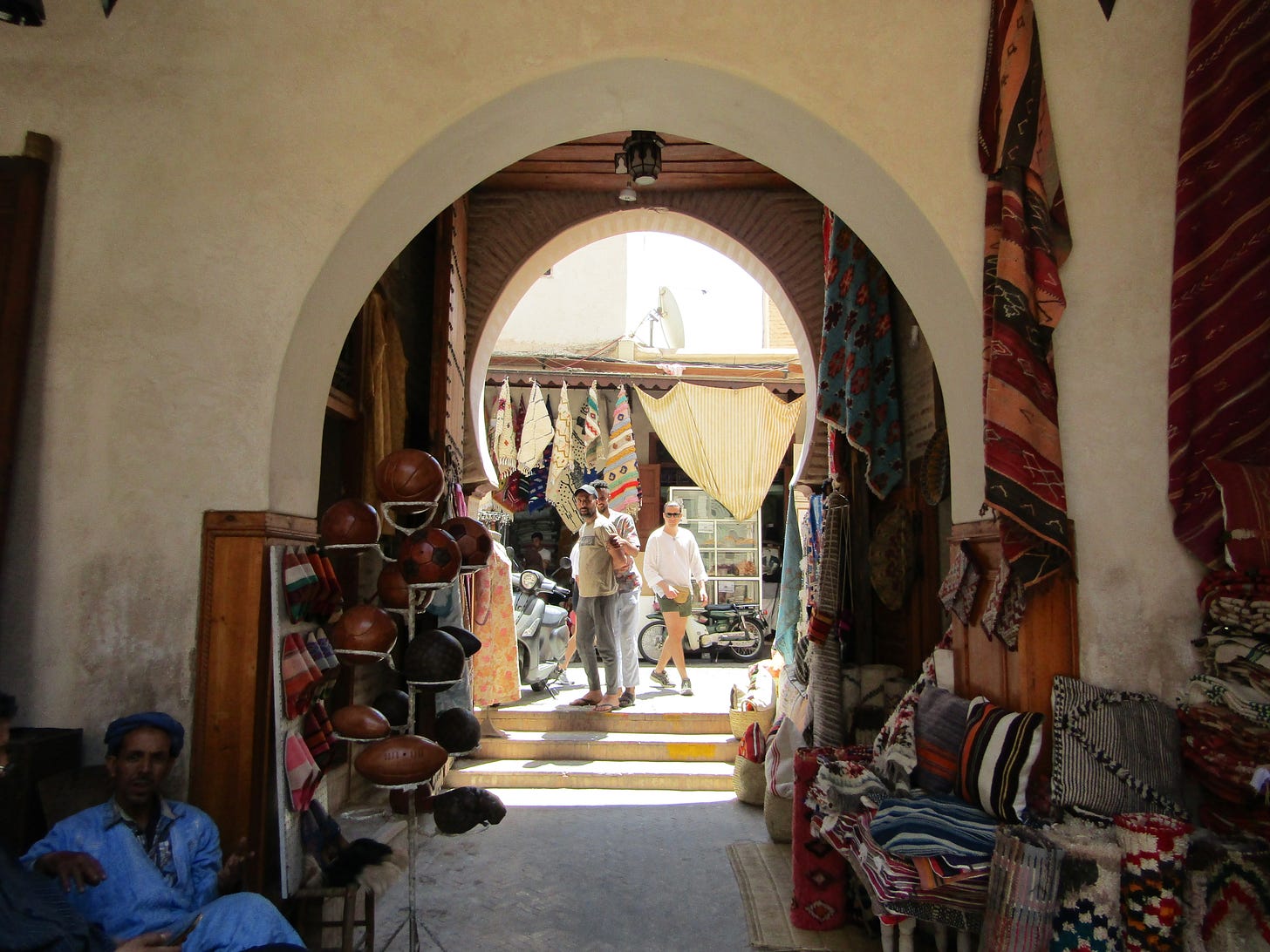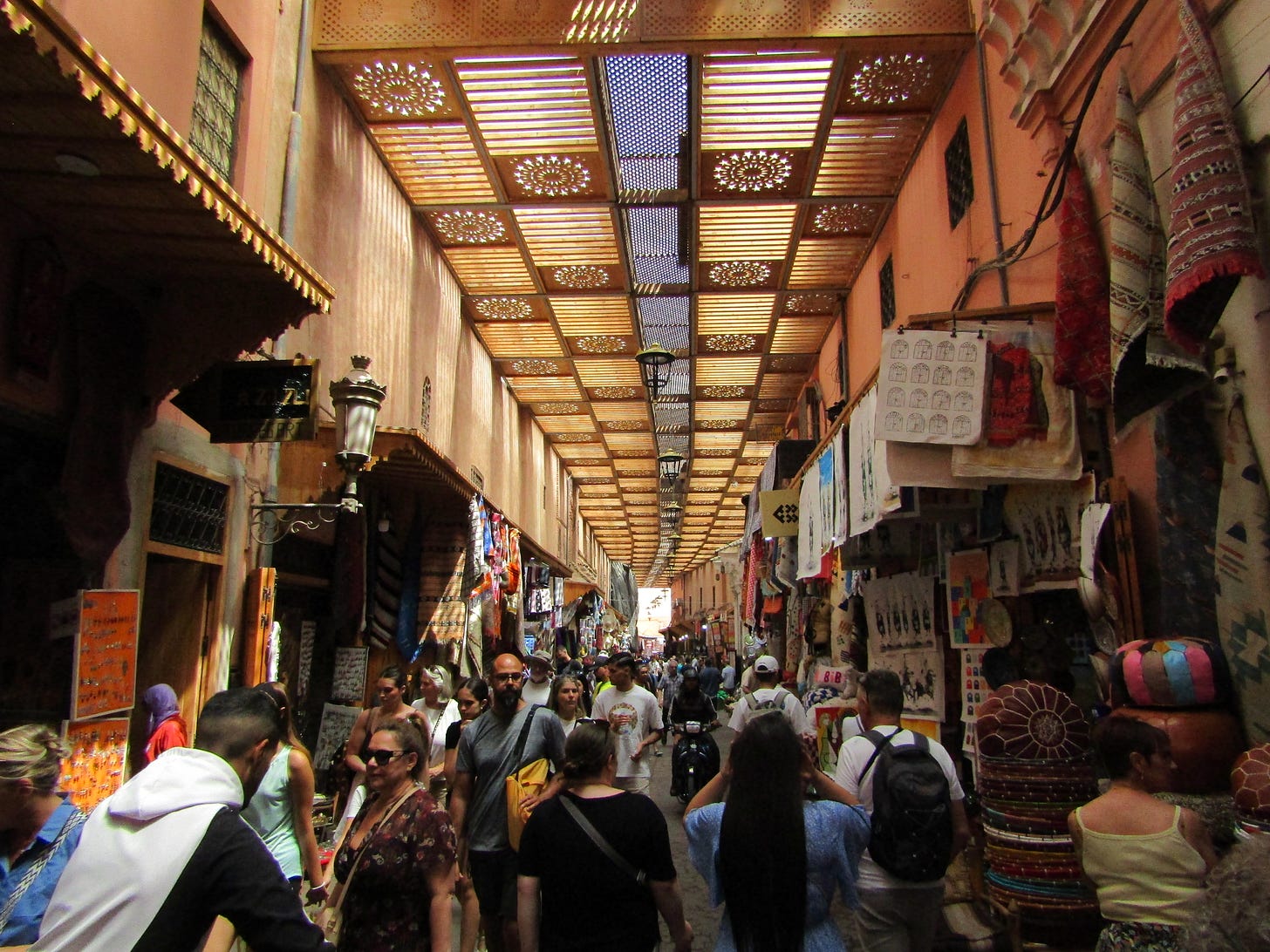Marrakech: Authentic, or authentically performed?
My last visit to the city left me thrilled - and slightly worried
Marrakech is my favourite city in the world. Its people, food, architecture, and colours are irreplicable and impossible to find elsewhere. I have set foot in the territory seven times, yet it surprises me with new corners, flavours, and smells in every visit.
However, I do have to confess that there is something I noticed had changed in my last visit to Marrakech: its authenticity.
Don’t get me wrong: the hectic, chaotic and excitingly overwhelming atmosphere of the heart of the city – Jemaa el-Fnaa square, part of UNESCO’s Representative List of the Intangible Cultural Heritage of Humanity – remains intact. Snake charmers, henna tattooers, traditional food stalls, Berber bands and dancers, and street vendors bring life to the 200,000 square feet cultural hub, which bustles with sound, smells and colours from early in the day until late at night. At dusk, the adhans from the multiple mosques overlap, creating an enchanting chorus that echoes across every corner, calling for prayer while pinks and oranges tinge the sky.
Marrakech is chosen by many as an induction destination to Morocco and Africa, commonly ranking first in the list of options when travellers decide to branch out from the traditional holiday itinerary based in European capital cities. Despite no longer being the political and economic nucleus of the country, its location also adds value to the city: it is the gateway to the Atlas Mountains and the Sahara desert, being for some the ideal starting point of a longer trip around the country.
It was when wandering around the souks, a maze of traditional markets, that I noticed something had changed from my earliest memories of the city, over 15 years old. The souk still makes all your senses come alive. Colourful crafts, from carpets to rows of vivid leather babouche slippers, pottery, lanterns and traditional Moroccan djellabas, dresses and caftans fill the narrow streets. Donkey carts instead of cars still circulate on the Medina’s1 extremely unevenly paved alleyways. Families of three or four still ride together on a single motorbike – none of them wearing a helmet, of course – and cuts of meat and feathered chickens hang openly from the ceiling of the butcher shops. Some things never change.
There was a component, however, that lacked: locals. At the end of the day, those who build the city’s true essence and soul.
The souks’ labyrinthine alleys, founded over a thousand years ago, remained, until the late 1990s, a place where merchants sold their products and locals gathered to trade and purchase all their everyday goods, from clothes to meat, bread, and spices. Now, most of these shops have been replaced with tourist souvenirs, repetitive patterns of handbags, identical pieces of golden and silver jewellery and fake dupes of football tops and Adidas trainers — mainly imported from China and Vietnam.
Shops are now tailored for tourists’ tastes, rather than oriented to locals’ needs. I felt like I was walking through streets meticulously arranged and crafted for visitors’ gaze, instead of getting an insight into the Moroccan culture, customs and lifestyle as an outsider.
I could not help but notice a strikingly long queue outside a jewellery shop in the souks. When I asked what it was for, I was told tourists were waiting to get personalised engraved bracelets that had gone viral on TikTok. A similar thing happened at an ice cream shop, whose modern, Westernised design made me feel like I was in central London rather than in North Africa.
There is no other reason than the increase in tourism behind this shift in the essence of the city. Marrakech is now the most-visited destination on the African continent. In 2024, record-breaking figures showed the country welcomed 17.4 million visitors, a goal originally set for 2026 that surpassed 2019 figures by 35% 2019, according to the Ministry of Tourism.
Tourism in Morocco is now the leading contributor to the country’s GDP, accounting for 7.3% of it and being the main driver of its economic growth. Morocco is expected to receive 26 million tourists in 2030, when it will co-host, alongside Spain and Portugal, the FIFA World Cup.
Does this benefit the city’s locals and the country’s economy and development? Without any doubt.
Does this mean that its authenticity is at risk? I believe so.
This may sound extreme, and I never thought I would find myself saying this about such a unique city, but I fear Marrakech is transforming into less of a city and more of a performance stage. Following the pattern seen in the canals of Venice, Barcelona’s Las Ramblas, and Istanbul’s Grand Bazaar, Marrakech might become a place for tourists, not a city of people.
If the city is on your travel bucket list, don’t wait. Visit Marrakech soon – otherwise, it might be too late.
“Medina”: Arabic word that translates to the old part of a town or city




